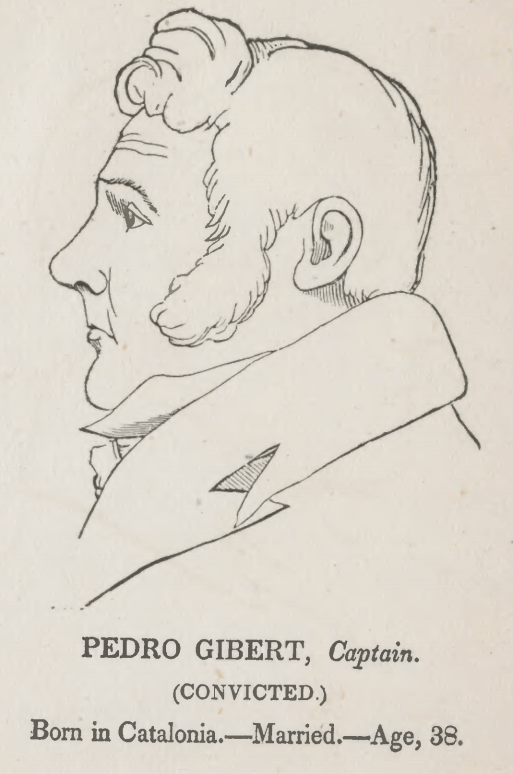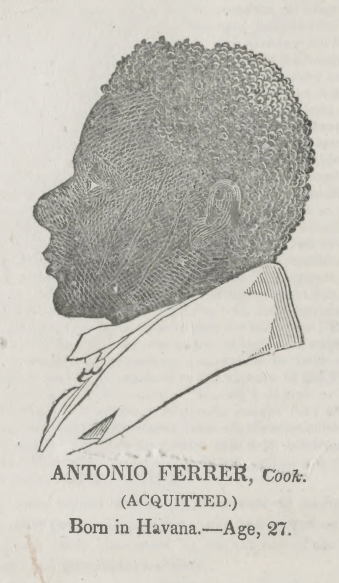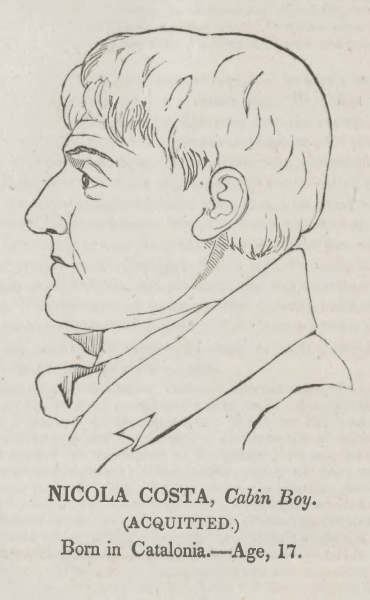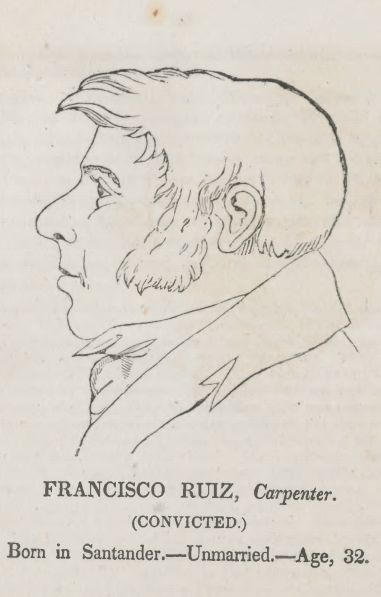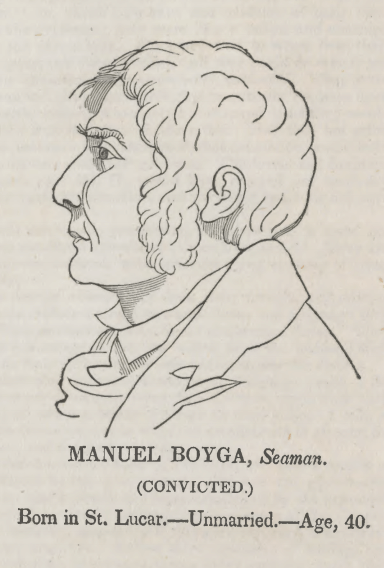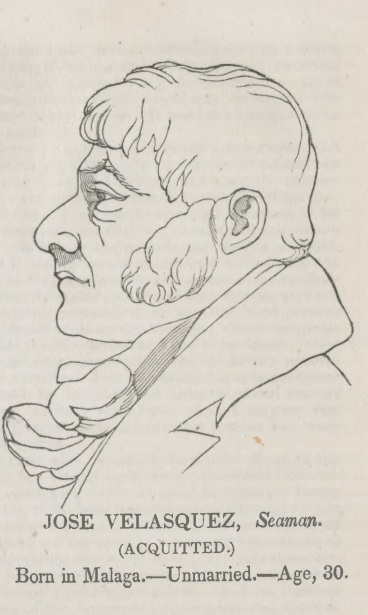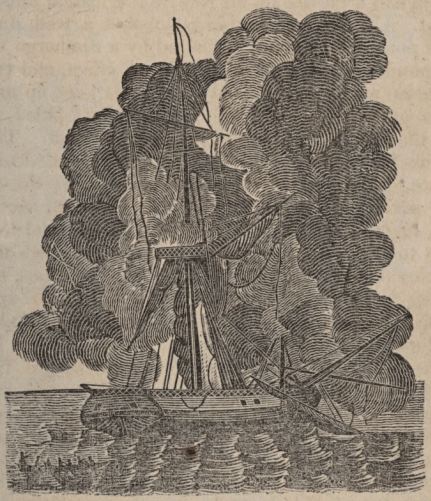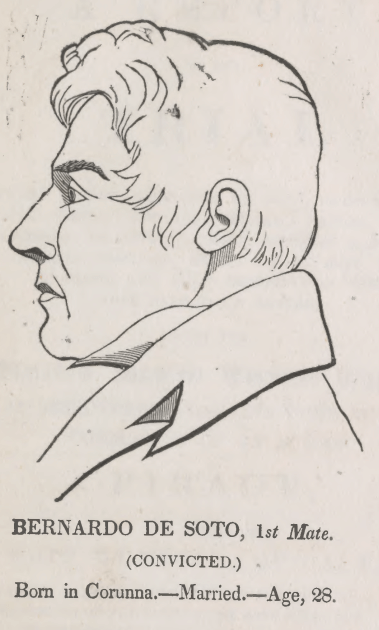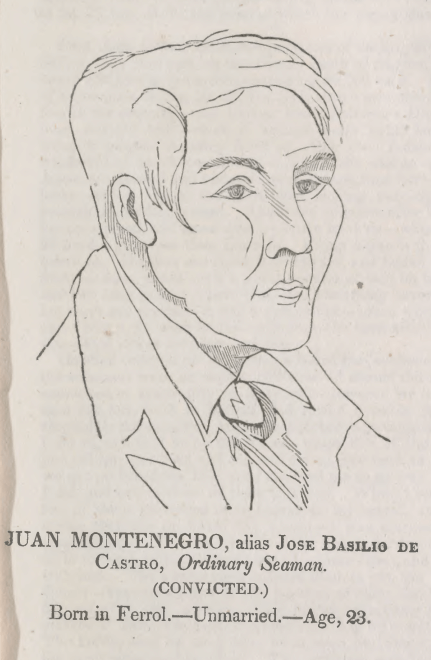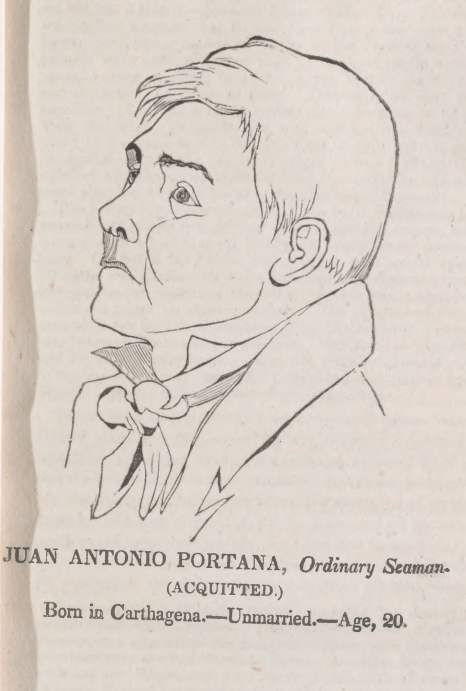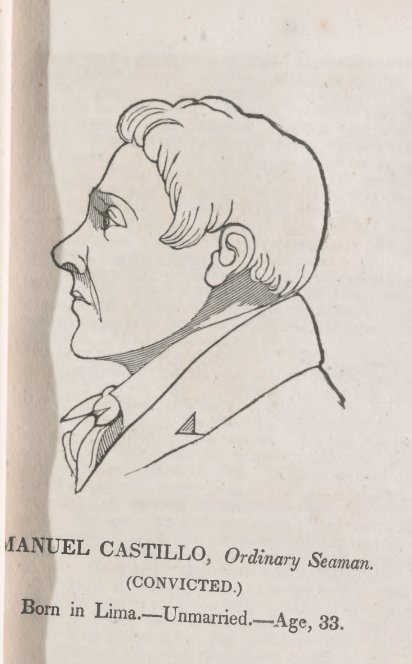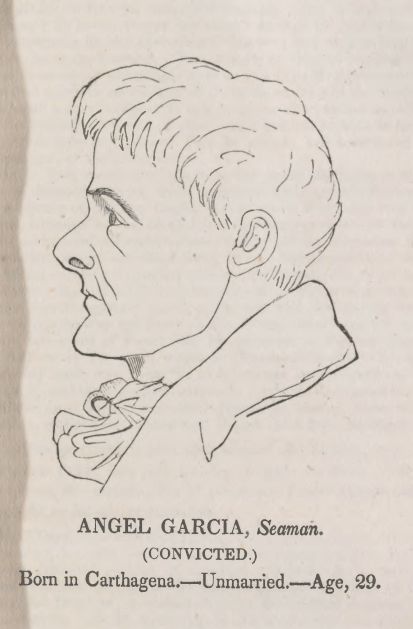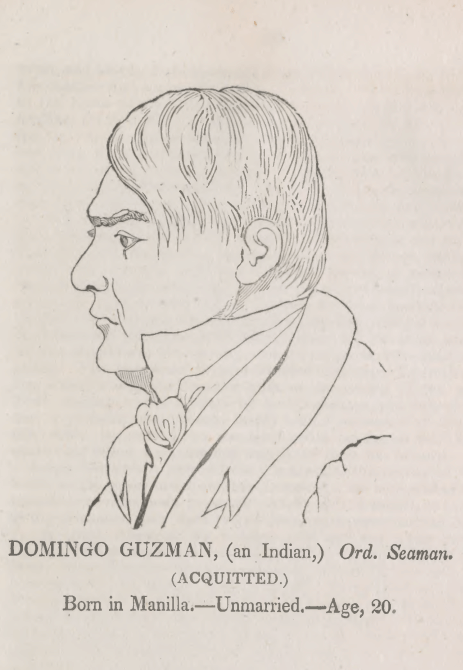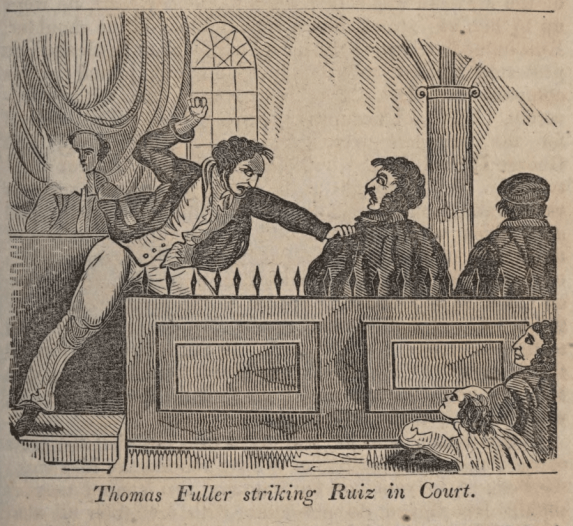Don Pedro Gilbert
Don Pedro Gilbert, a nineteenth-century Spanish pirate who raided merchant ships in the Atlantic, was executed by hanging, in 1835, at the Leverett Street Jail in the West End. The West End Museum resides approximately where the Jail stood.
Don Pedro Gilbert, born Pedro Gilbert, was born around the year 1800 in Catalonia, Spain. He first worked as a privateer for the government of Colombia. A privateer was a “pirate with papers,” for governments authorized privateers to rob the merchant ships of rival nations. Privateering was already a lucrative job, yet privateers often made extra money robbing vessels they were not authorized to target, which moved them into piracy. Gilbert became a pirate once he started raiding American merchant ships off the coast of Florida. By his 30s, Gilbert was described, in the words of Charles Ellms, as “exceeding handsome, having a round face, pearly teeth, round forehead, and full black eyes, with beautiful raven hair, and a great favorite with the ladies.” His ship, the Panda, was painted black with a white streak down the middle, and Gilbert would regularly wait with his crew in coves for the chance to lure a merchant ship with a fabricated distress call. The Panda could sail in shallow waters as well as the deep, but the merchant ships responding to Gilbert’s signal for help would often crash in the shallow water.
On September 20, 1832, Gilbert and his crew departed from their otherwise successful strategy by attacking an American merchant ship, the Mexican, in open waters off the coast of Florida. The Mexican, carrying $20,000 in silver for a voyage to Rio de Janeiro (some sources suggest Argentina), was owned by the successful merchant Joseph Peabody, the wealthiest man in Salem, Massachusetts in the early 1800s. After the Panda fired a gun across the bow of the Mexican, John Groves Butman, the ship’s captain, surrendered. The Mexican only had small guns aboard, and Butman knew he would have been overpowered in a fight. Gilbert and his pirate crew then assaulted Butman with a trumpet horn, roughed up the crew, stole the silver (held in ten boxes carrying $2,000 each), and locked up the crew below their own deck. The pirates had also set the Mexican on fire before starting their return to Florida. However, Butman was able to escape from captivity through his ship’s skylight, which the pirates did not fasten shut, and free the rest of his crew. They kept the ship smoldering (smoke, but no flames) to maintain the pretense, for the pirates looking back, that the Mexican was burning up. Although Gilbert’s crew smashed their compass and cut their rigging, the crew of the Mexican devised a makeshift mast by which to return home. Butman and his crew returned to Salem six weeks after the confrontation, and reported Don Pedro’s theft of silver.
The Panda briefly escaped until being captured by the British Royal Navy the following year. In 1833, HMS Curlew, on the hunt for ships participating in the slave trade, discovered and captured the Panda off the coast of West Africa in 1833. Don Pedro, like many Atlantic pirates, captured and sold enslaved people. Ellms, in The Pirates’ Own Book: Authentic Narratives of the Most Celebrated Sea Robbers (1837), noted that the Panda “was fashioned, at the will of avarice, for the aid of cruelty and injustice; it was an African slaver.” Gilbert made multiple voyages to West Africa to capture slaves in what was then called “the Guinea trade,” referring to the generalization of enslaved West Africans as originating from Guinea. Upon capture, Gilbert and his twelve crew members were brought to Salem for a hearing, but their trial began in Boston on November 11, 1834. Gilbert and crew were held at Leverett Street Jail in the West End, approximately at the site where the West End Museum resides today. All plead not guilty, though one of the mates, Manuel Delgado, committed suicide in jail before the trial. The trial was presided over by Judge Joseph Story, who became the youngest Supreme Court Justice in US history. Because the Panda crew set their ship on fire after being discovered by HMS Curlew, there were no log books to provide documentary evidence of Gilbert or the Panda’s role in raiding the Mexican. Thus, the prosecution relied entirely on eyewitnesses to make their case, including the testimony of Jose Perez, one of Gilbert’s mates. The jury found Gilbert and just five of the crewmates guilty of stealing the silver “piratically, feloniously, violently, and against the will of…John Groves Butman,” and all but one were given death sentences.
On June 9, 1835, Don Pedro Gilbert, Manuel Castillo, Juan Montenegro, Manuel Boyga, and Angel Garcia were executed by hanging in the Leverett Street Jail. Gilbert was the last person to engage in a recorded act of piracy in the Atlantic, though he was not the “last American pirate” as he so often gets called: that distinction goes to Nathaniel Gordon, executed in 1862 for the attempted smuggling of enslaved people, which violated the U.S. Piracy Law of 1820.
Article by Adam Tomasi
Source: West End Museum (Walls of Stone: The Leverett Street Jail); New England Historical Society; Historic Ipswich; Treasure Coast Palm; Lenuel Gulliver, Trial of the Twelve Spanish Pirates of the Schooner Panda, a Guinea Slaver (Google Books); Colonial Sense; Charles Ellms, The Pirates’ Own Book


